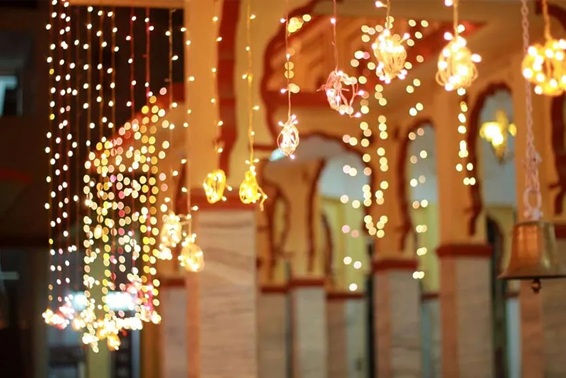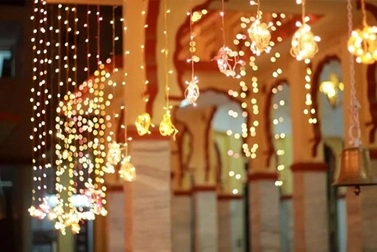
Introduction
- Light has long been a universal symbol in spiritual and religious traditions.
- It represents not just physical illumination, but also metaphysical and emotional ideas like hope, purity, knowledge, divinity, and triumph over darkness.
- In this post, we’ll explore the symbolic use of light in major religious and spiritual festivals across the world.
1. Hinduism — Diwali (Deepavali)
- Known as the “Festival of Lights.”
- Symbolizes the victory of good over evil, light over darkness, and knowledge over ignorance.
- Diyas (oil lamps) and modern decorative lights are lit to welcome prosperity and divine blessings (especially of Goddess Lakshmi).
- Homes and streets glow with lights, making it a deeply spiritual and joyous celebration.
2. Christianity — Christmas
- Lights represent Jesus Christ as the ‘Light of the World’.
- Candles and string lights on trees, homes, and churches serve as reminders of faith, hope, and divine presence.
- Advent candles are also lit in the weeks leading up to Christmas.
3. Judaism — Hanukkah
- Also called the Festival of Lights.
- Commemorates the miracle of the oil lamp that burned for eight days in the rededicated Temple.
- Lighting the menorah symbolizes religious freedom, resilience, and spiritual perseverance.
4. Buddhism — Vesak (Buddha Day)
- Celebrated with lanterns, candles, and oil lamps.
- Symbolizes enlightenment, the dispelling of ignorance, and the path toward inner peace.
- Many devotees release lanterns into the sky or onto rivers to signify letting go of worldly attachments.
5. Islam — Ramadan & Eid al-Fitr
- While not centered on decorative lighting, modern customs involve illuminated mosques, homes, and streets.
- Lights symbolize spiritual reflection, joy, and celebration of divine mercy after a month of fasting.
- Especially in countries like Egypt and Turkey, “fanous” lanterns are used to signify hope and divine guidance.
6. Pagan & Wiccan — Yule and Solstice Celebrations
- Celebrates the return of light after the longest night (Winter Solstice).
- Candles, bonfires, and fairy lights represent rebirth, renewal, and nature’s cycles.
- The lighting of a Yule log is deeply symbolic of warmth, protection, and divine energy.
7. Sikhism — Bandi Chhor Divas
- Coincides with Diwali.
- Celebrates Guru Hargobind Ji’s release from prison.
- Light signifies freedom, justice, and spiritual liberation.
Conclusion
- Despite cultural and theological differences, light in religious festivals often shares common themes: hope, truth, divinity, and triumph.
- Decorative lighting, in this context, becomes more than just beautification — it becomes a spiritual expression and a medium for storytelling.

